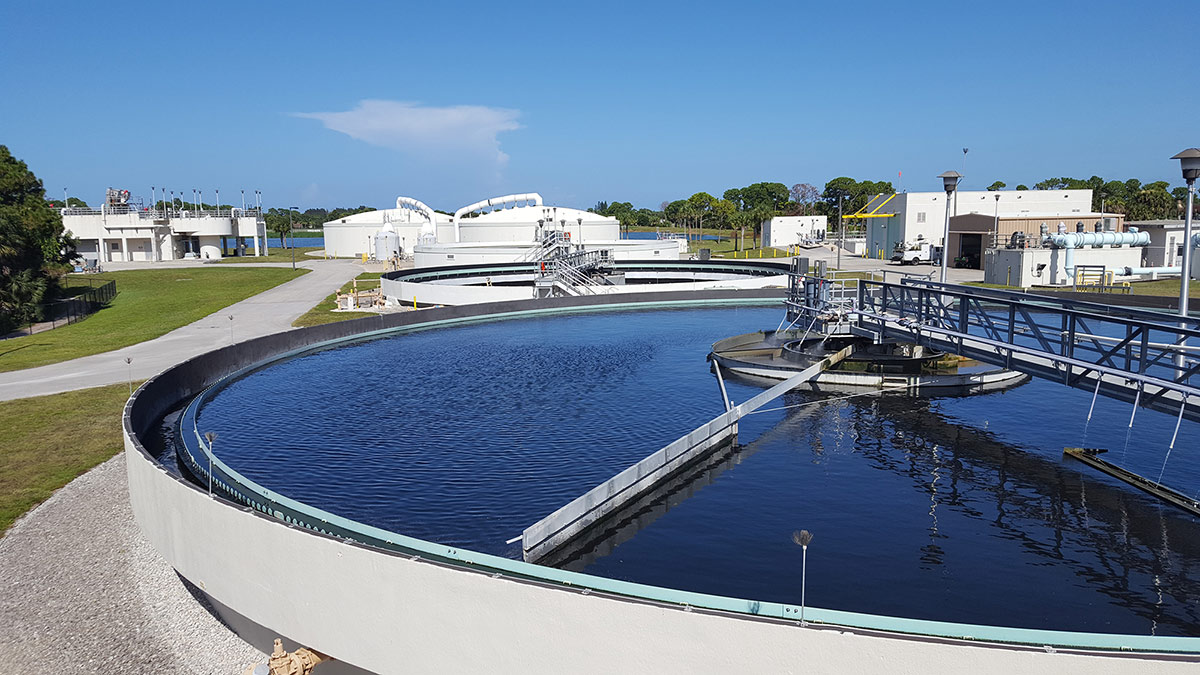Strategic Approaches to Enhance Waste Water Therapy Effectiveness and Reduce Environmental Influence
In the world of drainage therapy, the quest for improved efficiency and minimized environmental impact is a continuous difficulty that requires tactical remedies. As culture grapples with the imperative to handle water resources sustainably, a nuanced technique becomes vital. The assimilation of innovative treatment modern technologies, energy-efficient processes, resource recuperation strategies, enhanced nutrient removal methods, and clever monitoring and control systems represents a diverse structure for resolving these pushing concerns. Nonetheless, what exists at the core of this complicated web of approaches is the prospective to transform the means we approach waste water treatment, not simply as a procedure of disposal, but as a useful chance for innovation and environmental stewardship.
Advanced Treatment Technologies
Cutting-edge membrane layer filtration systems have actually transformed advanced wastewater treatment procedures, dramatically boosting the elimination of pollutants. These innovative systems work forcibly water via a semi-permeable membrane, effectively separating contaminations from the water stream. The membrane's microscopic pores catch toxins such as bacteria, infections, and put on hold solids, enabling only detoxified water to travel through. This modern technology has shown to be extremely effective in eliminating a variety of impurities, including pharmaceuticals, hefty steels, and organic compounds, which are usually testing to eliminate with traditional treatment approaches.
In addition, membrane layer filtration systems use numerous benefits over conventional therapy methods. Furthermore, these systems are extremely functional and can be easily incorporated into existing therapy plants or utilized as standalone devices for decentralized applications.
Energy-Efficient Processes
The combination of energy-efficient processes in wastewater therapy systems is important for maximizing source use and lowering functional costs. By executing energy-efficient innovations, treatment plants can considerably decrease their carbon footprint and overall ecological effect. One key strategy to boosting energy efficiency in wastewater treatment is the application of innovative aeration systems, such as fine bubble diffusers or surface area aerators, which can enhance oxygen transfer performance and reduce power consumption. Additionally, including energy recovery systems, like anaerobic digestion for biogas production or utilizing excess warm for thermal processes, can aid counter energy needs and advertise sustainability.
Additionally, optimizing procedure control and automation through using innovative sensing units and keeping track of systems can boost overall energy effectiveness by adjusting operations in real-time based upon real demand and problems. Implementing power audits and regularly keeping an eye on power efficiency signs are important practices to determine locations for enhancement and track energy-saving efforts effectively. In general, the fostering of energy-efficient procedures in wastewater treatment not only benefits the atmosphere however additionally adds to long-term cost savings and operational sustainability.
Resource Recuperation Methods
With a concentrate on maximizing source usage and sustainability in wastewater therapy systems, the execution of source recuperation methods arises as a critical aspect in enhancing operational performance. Source recuperation methods in wastewater treatment entail the recognition and extraction of important resources from the waste stream, thereby turning what was when taken into consideration waste into a useful property. By applying resource recovery techniques such as nutrient elimination and recuperation, power generation from natural matter, and the production of reusable water, wastewater therapy plants can minimize ecological effect while taking full advantage of efficiency.

Improved Nutrient Elimination Strategies
Applying advanced nutrient removal strategies is vital for enhancing the efficiency of wastewater treatment systems. One of the crucial methods used for enhanced nutrient elimination is the procedure of biological nutrient removal (BNR), which involves the elimination of nitrogen and phosphorus via biological processes.

In addition to BNR, advanced therapy techniques such as membrane bioreactors (MBRs) and created wetlands can also be used to improve nutrient removal performance. By integrating these innovative nutrient elimination techniques right into wastewater therapy districts, systems and industries can effectively reduce nutrient pollution and secure the atmosphere.
Smart Monitoring and Control Systems
Making use try this of advanced modern technology, the combination of wise surveillance and control systems changes the operational efficiency of wastewater treatment facilities. These systems incorporate innovative sensing units and information analytics to constantly monitor key specifications such as pH levels, turbidity, liquified oxygen, and flow rates in real-time. By accumulating and evaluating this data, drivers can acquire important insights into the performance of the therapy procedures, enabling aggressive modifications to enhance therapy efficiency.
Smart surveillance and control systems also sustain remote surveillance capacities, allowing operators to accessibility real-time information and control functions from off-site places. This remote accessibility boosts functional flexibility and responsiveness, enabling swift treatments in situation of system breakdowns or variations in influent top quality. The anticipating maintenance capabilities of these systems assist prevent devices failings and reduce downtime, ultimately enhancing the overall integrity of wastewater therapy operations.
Verdict
In verdict, critical approaches such as innovative therapy technologies, energy-efficient processes, resource recovery strategies, improved nutrient removal methods, and clever monitoring and control systems play a vital function in boosting wastewater treatment efficiency and decreasing environmental effect. By executing these methods, wastewater treatment plants can enhance their general efficiency, minimize power usage, recuperate important resources, and guarantee compliance with ecological guidelines. These methods my response are crucial for sustainable and effective wastewater monitoring techniques.

In final thought, calculated strategies such as sophisticated treatment modern technologies, energy-efficient processes, resource healing methods, boosted nutrient elimination methods, and smart surveillance and control systems play a crucial role in enhancing wastewater therapy effectiveness and lessening environmental impact.